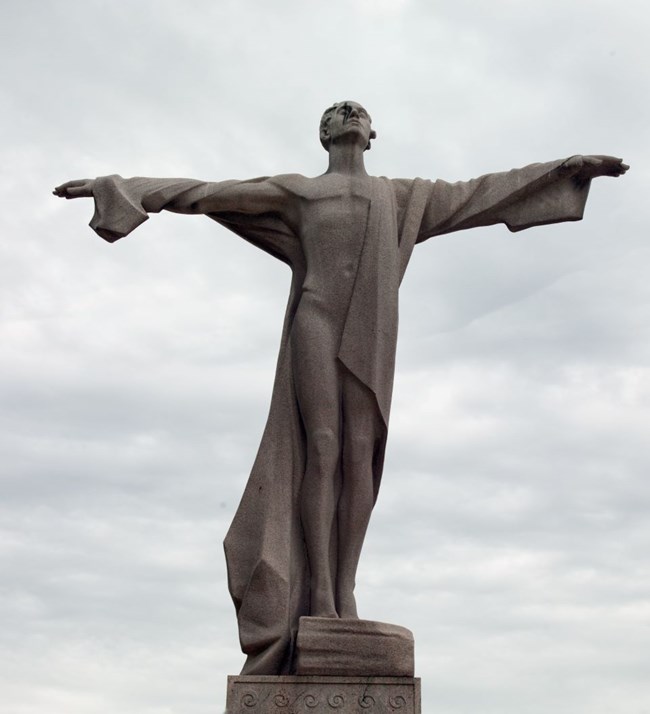
In a matter of days, some of the more influential women of the United States organized to create a memorial in Washington, D.C., to honor those men who gave up their chances on the lifeboats, for the women and children. Of the 531 women and children on board, 70% were rescued, compared to only 20% of the men. The movement organized a Committee of One Hundred on April 25, 1912. One of the more prominent members was Congresswoman Florence Prag Kahn of California, who presented a resolution to Congress. Also, the committee had no membership barriers and was open to all, regardless of race, religion, or social background. The competition for designing the memorial was only open to women artists. As for fund-raising, the Committee decided that each donor could donate only one dollar, so that as many people as possible could take part. The first dollar was given by First Lady Helen Taft, the wife of President William Howard Taft. One of the more touching donations was by a Mary Glynn. She had been a steerage passenger on the Titanic, and her donation was the first American dollar she had ever earned. To encourage such donations, the committee sent out 10,000 letters to American women in labor unions, fraternal orders, the army and navy, and women's clubs. The movement also founded the Women's Titanic Memorial Association, to help raise more money. By January 1914, the movement had some $43,000 in hand. The U.S. government helped out with the remainder of the estimated cost of the memorial: $500,000. The original design was a giant arch, to be placed north of the Lincoln Memorial, at the foot of New Hampshire Avenue. On March 3, 1917, Congress gave permission to use the site. There was a delay of several years, in order to improve the river wall or embankment nearby. The arch design was later dropped in favor of a statue 15 feet high, showing a man with arms outstretched, in a pose meant to suggest the crucifixion. Its designer was Gertrude Vanderbilt Whitney. Mrs. Whitney had also designed the Daughters of the American Revolution Memorial and the Pan-American Union Fountain. The statue's sculptor was John Horrigan, who worked at Quincy, Massachusetts. Its base and platform were designed by Henry Bacon, who had also designed the Lincoln Memorial. On May 26, 1931, the memorial was unveiled by Mrs. Taft. President and Mrs. Hoover were also there, plus several Cabinet officials. Mrs. Whitney could not attend due to illness. In 1966, the Titanic Memorial was removed and stored away to make room for the Kennedy Center. In 1968, it was re-erected at its present location at 4th and P Streets, SW, near Fort McNair. |
Last updated: October 6, 2021
